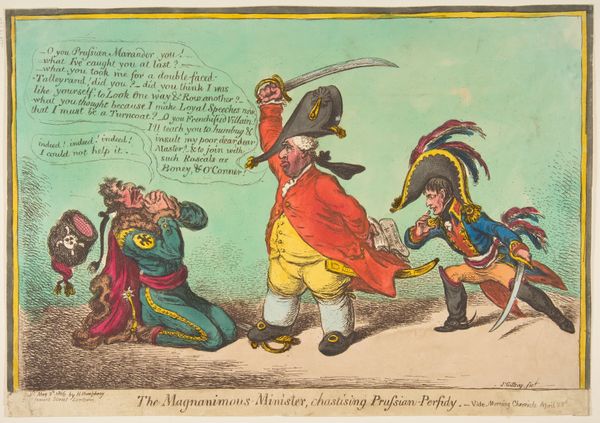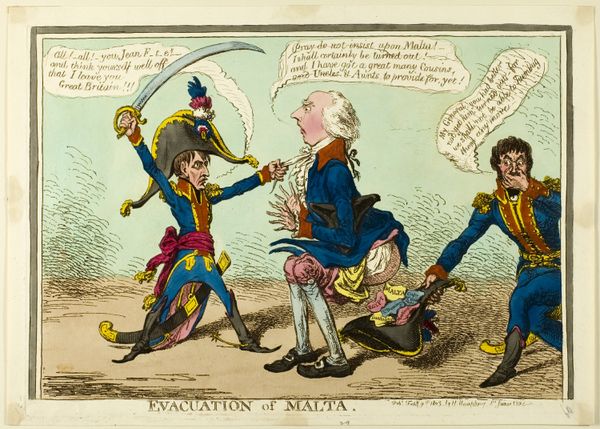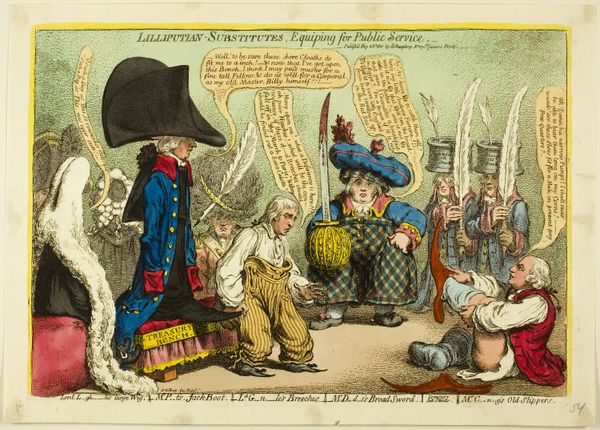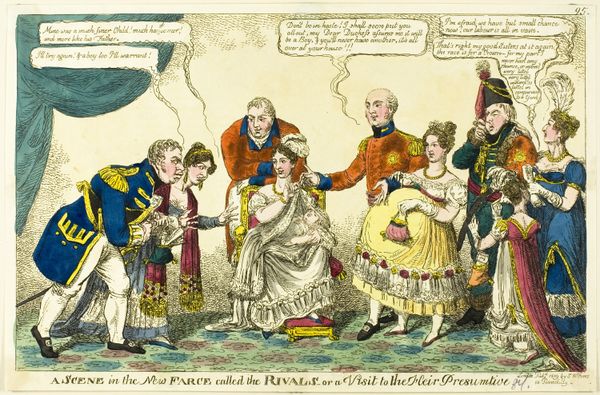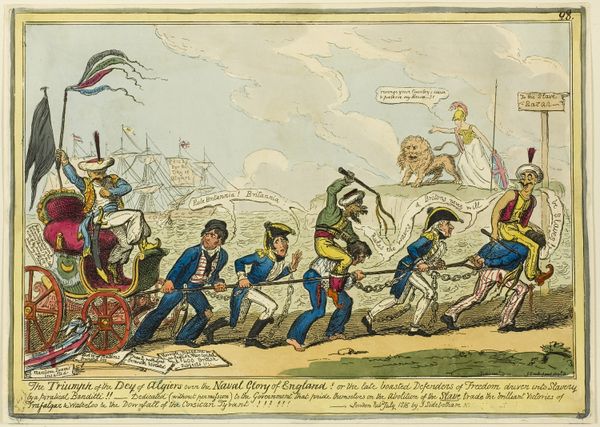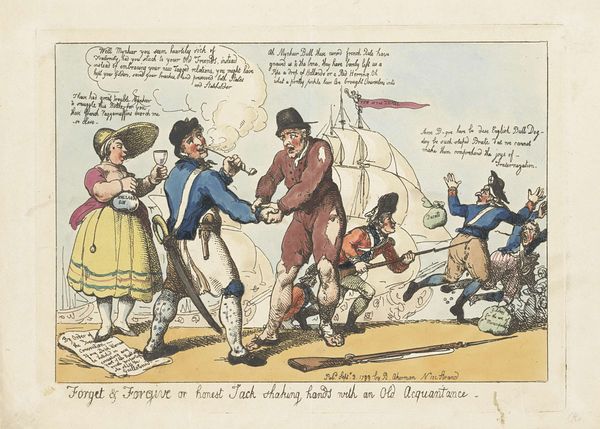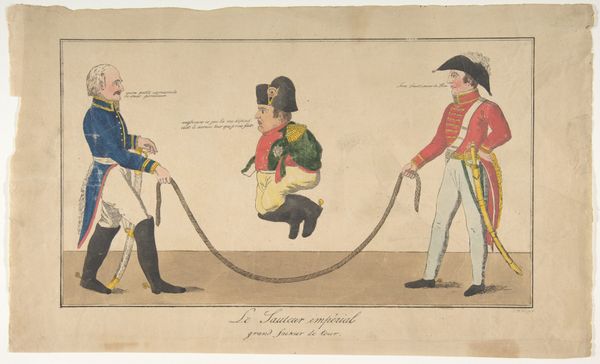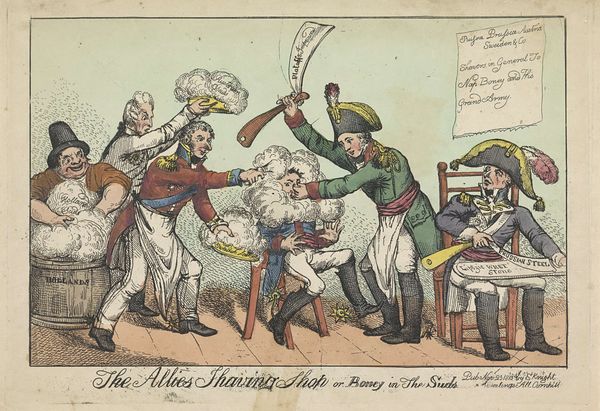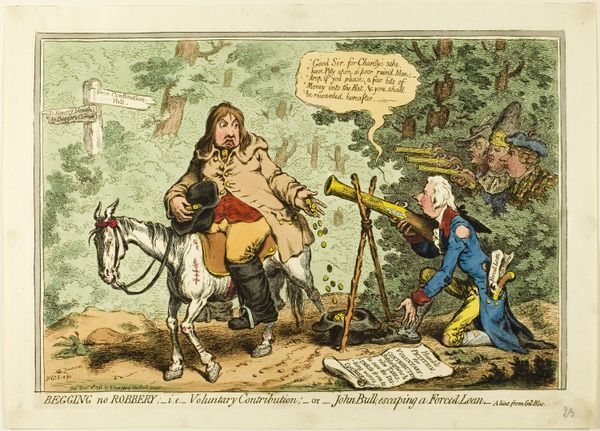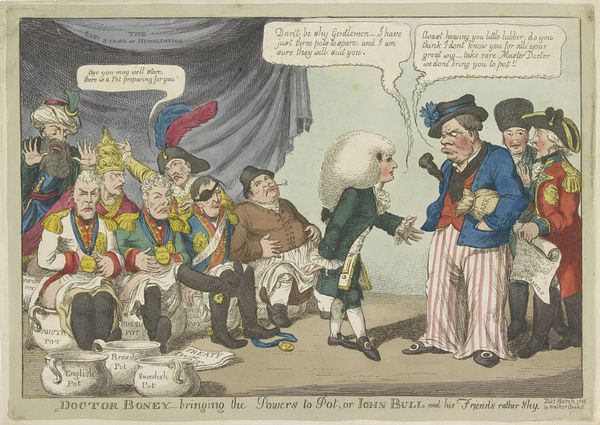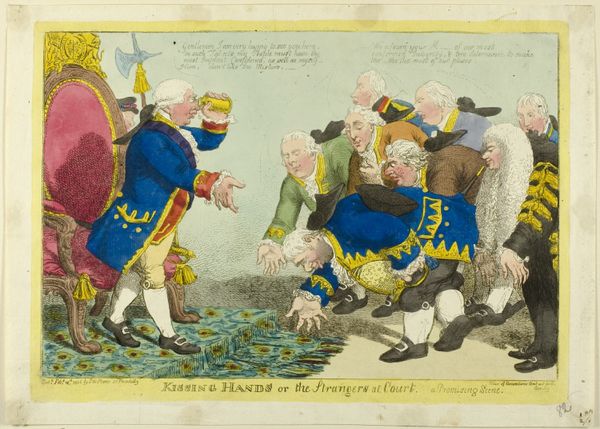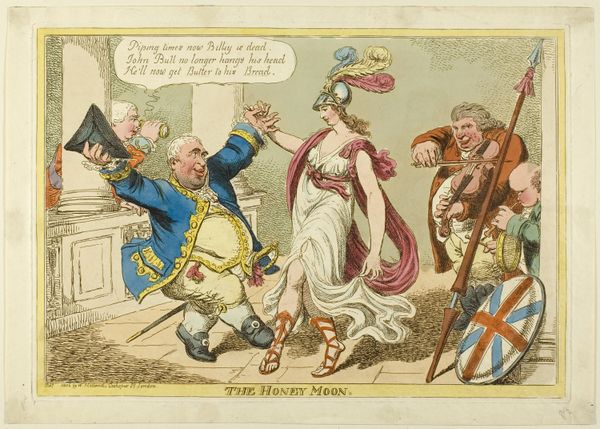
drawing, print, etching, paper
#
drawing
# print
#
etching
#
caricature
#
caricature
#
paper
#
history-painting
Copyright: Public Domain
Curator: James Gillray etched and printed "Armed Heroes" in 1803. The print depicts a caricatured confrontation between Britain and France. What strikes you most when you look at this? Editor: Its satirical edge, definitely. Gillray’s exaggerated style amplifies the political tensions and rivalries of the time into something almost absurd. The grotesque figures highlight the destructive absurdity of warfare and power struggles between nations. Curator: Right, and let’s not overlook the materials used: etching on paper allowed for the widespread distribution of these political critiques. Think about how this medium allowed his ideas to be circulated amongst different classes. Editor: The print served as a form of political discourse that critiqued warmongering attitudes. "Armed Heroes" provided a visual vocabulary accessible across educational backgrounds—not just for aristocrats, but also those influenced by their decisions. Curator: Yes. By exaggerating the physical attributes and actions of political figures, he criticized their policies and leadership in ways that words alone couldn't convey. But to circle back to your earlier point: How does it intersect with broader power narratives of the period? Editor: "Armed Heroes" speaks directly to Britain's socio-political anxieties in 1803 when Gillray produced the work, touching upon national identity, anti-French sentiment, and colonial ambitions. In essence, Gillray captures this nationalistic fervor and skewers the elite. Curator: We shouldn't forget how etching is a labour-intensive process, and how the reproducibility of printmaking is inherently linked to dissemination of information... Editor: Gillray made accessible the political narrative of the time through widely consumed media. His social commentaries shape how future generations view and analyze an era rife with inequality. Curator: The intersection of material and message is central to my appreciation. Editor: And situating that production and exchange within the historical tensions highlights the print's political power.
Comments
No comments
Be the first to comment and join the conversation on the ultimate creative platform.
